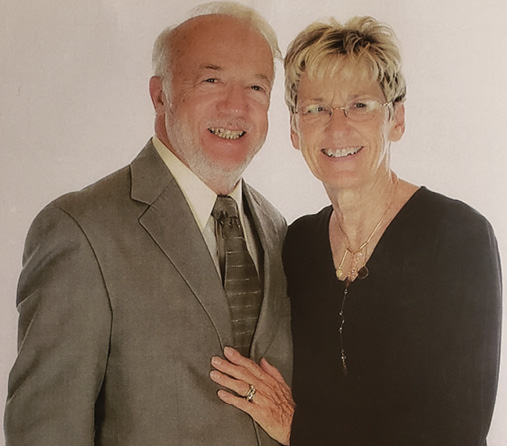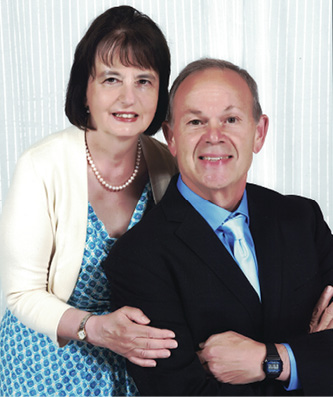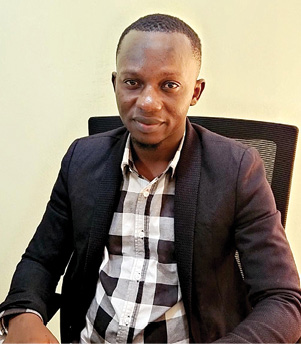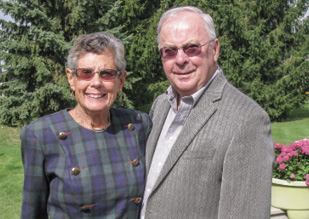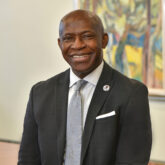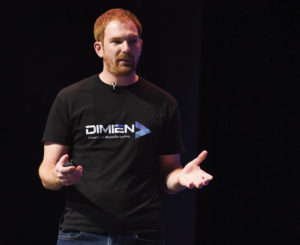
“Water is something we use every day. It’s something that we take for granted—just being there at our fingertips all of the time. The less we can use and the more we can keep it in its natural cycle on the planet, the better it will be for all of us.”
Water is the most plentiful natural resource on the planet—with nearly two-thirds of the Earth covered in water. The physical properties of H2O are rather unique, as it is one of only a handful of common liquids that expands when it freezes. Most solids sink in liquid. Water floats.
Most people know about water’s basic forms: liquid, ice, steam/vapor. But few know about a fourth form called supercritical, which occurs when water is heated and pressurized. When that happens, it gets a density similar to gas, but has a consistency and flowability like a liquid, and it becomes more nonpolar like an oil.
Chemist Brian Schultz ’09, founder and CEO of Dimien in Buffalo, N.Y., is using water in this supercritical state to manufacture chemicals in an environmentally friendly way, and he is selling those chemicals to companies that make clean tech products such as more energy-efficient windows and higher functioning batteries.
He explained his company’s manufacturing process like this: If you put salt in a glass of water, the salt dissolves and becomes ions. Like table salt. If you heat up that glass of water and put it under high pressure—a process called hydrothermal manufacturing—the metal ions emerge as a solid material.
“That’s how we make our chemicals,” Brian said. “Or you can think of it as a very fancy espresso machine.”
One of the most promising aspects of his business is that the only residue of the hydrothermal process is water.
“It goes in as water and comes out as water,” said Brian, who earned a bachelor’s in chemistry and in adolescent education at SUNY Oswego and a Ph.D. in chemistry from the University at Buffalo.
Brian acknowledged that many people can think of historic bad actors within the chemical manufacturing business or many other kinds of businesses that did a poor job of controlling their waste stream, but he is dedicated to using clean tech to create energy-efficient materials that are less expensive or higher operating than other materials currently available.
“I’m motivated by being able to take science and convert it into usable products for the betterment of society,” he said. “My company is focusing on producing chemicals that have an impact on clean tech and on saving energy. I have three kids. I am worried if we don’t slow down the pace with which we use the natural resources of the planet, my kids or my kids’ kids could suffer from the consequences of that.”
Although classically educated as a teacher and scientist, today Brian finds himself wearing the many hats of an emerging entrepreneur and has had to learn about all aspects of business—legal work, accounting, financials, sales, marketing, product development, supply chain and human resources, to name a few. He has successfully raised close to $3 million in federal and state funding as well as venture capital.
He also participated in the National Science Foundation’s Innovation Corps program, which seeks to assist scientists in bringing their ideas into the marketplace. He shares some of the lessons he has learned, like where to find funding to develop a prototype versus funding to bring the prototype to market, with other emerging entrepreneurs through a variety of programs in the Buffalo area.
As a Rochester, N.Y.-area native who now lives along Lake Erie, Brian said he is committed to this area and in preserving its precious fresh water resources.
From watching the water spouts and storms move across Lake Ontario from his 9th floor room in Funnelle Hall with his meteorology major roommate, Ted Letcher ’09, to taking a polar plunge in the icy lake’s waters with his college friends, to soaking in the grandeur of sunsets along the shoreline, to learning about how water is used in distilling whiskey, Brian cherishes the role water played in his college experience.
“Water is something we use every day,” he said. “It’s something that we take for granted—just being there at our fingertips all of the time. The less we can use and the more we can keep it in its natural cycle on the planet, the better it will be for all of us. Through my company, I’m trying to do my small part to curb our impact on the natural world. We can take the water that we generate, recycle it and put it back in the system again. That makes it a very environmentally friendly way to do chemical production.” —Margaret Spillett
You might also like
More from Alumni Profiles
Astrophysicist, Yale Professor Credits Oswego with Setting His Course for Stellar Career
Astrophysicist, Yale Professor Credits Oswego with Setting His Course for Stellar Career Earl Bellinger ’12 is one stellar guy. A quick review …
BHI Alumnus from Liberia Gains World of Experience
BHI Alumnus from Liberia Gains World of Experience Otis Gbala M’23 became the first SUNY Oswego graduate who studied from Liberia …
Couple’s Loyal Support for Oswego Spans Five Decades
Couple’s Loyal Support for Oswego Spans Five Decades Marilynn “Lynn” Nagy Farrar ’61 and Neil Farrar cherish their memories of Oswego …







